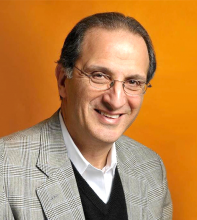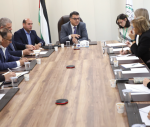You are here
The ‘new normal’
Jan 05,2016 - Last updated at Jan 05,2016
The twin conflicts raging in Iraq and Syria have unleashed an unsettling dynamic that is transforming both the Middle East and the world beyond this deeply troubled region.
It is clear that there is no end in sight to either of these conflicts and that the consequences of the continuing fighting are so profound that no simple solution will, any time soon, restore normalcy to either country or to the broader region.
As difficult as it may be to ingest this fact, it is imperative to recognise that a “new normal” has been created, which policy makers must recognise and to which they must respond accordingly.
Even before the advent of Daesh, Iraq had already experienced massive population transfers that occurred during the civil war that followed America’s foolish invasion and occupation of the country.
A Shiite-led sectarian government had been ushered in by the US, giving Iran new influence over Iraqi affairs.
Sunni and Shiite neighbourhoods had been largely “ethnically cleansed”. Minority communities had been removed from ancestral homes. And the Kurdish-controlled region had been given all but formal independence over its internal and external affairs.
Meanwhile, the disenfranchised Sunni Arab population had become so marginalised and embittered by the behaviour of the Shiite-led government that many fell prey to the lure of the extremist militias.
At the peak of the conflict, one-fifth of Iraq’s population had become either refugees or internally displaced persons (IDP). Since then, some Iraqis have returned to their country, though not to their homes, but recent fighting has created a new wave of both refugees and IDPs. At present, about one half a million Iraqis are registered as refugees, while almost 4 million are IDPs.
It was a massive and prolonged drought that first displaced large segments of Syria’s population. It was this displacement and the mishandling of it by the corrupt and brutal regime in Damascus that precipitated that country’s now four-year long war. Like Iraq, Syria’s war has become a sectarian conflict.
At last count, one-half of Syria’s population were refugees or IDPs, with over 4 million having left the country and nearly 8 million displaced within Syria.
More than 2 million fled to Turkey, more than 1 million are in Lebanon, and about three-quarters of a million refugees are in Jordan.
While most of these Syrians are housed in camps in Turkey and Jordan, hundreds of thousands of Syrians have settled in Turkey’s larger cities where they opened businesses and are attempting to create a new life for their families.
In addition, the fighting in Syria unsettled the Kurdish regions of both Syria and Turkey. Kurdish victories against Daesh in Syria provoked the Turkish government, which has long opposed any moves towards Kurdish independence. This spawned increased repression of Turkey’s Kurds. This conflict created new refugees and IDPs.
The situation in Lebanon is quite different. Because the country did not authorise the creation of formal camps, the Syrians who flooded across Lebanon’s borders spread out across the country, renting apartments or setting up informal structures.
They found work and are sending their children to school.
The pressure on tiny Lebanon has become enormous, straining the country’s capacity and its infrastructure to its limit.
Schools are overcrowded, medical services and social services are in short supply, as are water and electricity.
In addition, Lebanon’s population, at first receptive to the influx of their neighbours fleeing war, has become resentful as it has witnessed increases in prices of basic commodities, housing shortages, and dramatic increases in Lebanese unemployment and poverty.
So unbearable has the situation become for Syrians and Iraqis fleeing their countries’ conflicts that many have sought to make their way to Europe.
They have joined Afghanis, Palestinians, and Libyans and other Africans who risked all attempting to reach Europe, by land or sea, in order to start a new life.
This flow of humanity has grown into a massive wave, with best estimates putting the number of refugees in Europe at 1 million and growing each month.
In addition to this migration of refugees northwards has been a steady southwards flow of thousands of alienated and radicalised Europeans seeking to join the extremist groups in Syria and Iraq.
Nativists sought to conflate the two population flows in an effort to buttress their anti-immigrant/Muslim campaign resulting in the growth of right-wing xenophobic movements across the continent.
All too often, when refugee crises occur, they are seen as short-term problems requiring temporary solutions. However, all signs point to the fact that this will not be the case with regard to Syria and Iraq.
These crises will not end any time soon and the new realities that have been created are not easily reversible, and will only grow as the conflicts continue.
Syria and Iraq will not return to the status quo ante. If peace is restored in either country, there will, at best, be imperfect and tentative arrangements.
Daesh must be defeated, but there are dozens of other armed sectarian gangs that are currently the dominant forces on the ground in several parts of both countries that will not be inclined to support the emergence of a tolerant, welcoming pluralistic social and political order.
In the best-case scenario, Iraq and Syria will remain divided countries. It will take decades to reconstruct their infrastructures and economies and even longer to build inter-communal trust and social cohesion.
As difficult as it will be for the neighbouring countries to accept, the bulk of refugees currently in their midst will remain.
Tens of thousands of Syrians and Iraqis are being born each year in these countries and hundreds of thousands of children are growing up knowing no home but those they have found in exile.
Lebanon and Jordan, for example, will need to adapt themselves to the long-term, and even permanent, presence of Syrian communities within their nations.
And Turkey is going to have to come to grips with long-repressed Kurdish aspirations for self-determination.
Europe, too, must deal with the reality of this “new normal”. The refugees who are within its borders are not going to disappear and despite the ranting of European nativists, it will be possible neither to stop the flow of new refugees coming across their borders nor to “put them on trains and send them back”.
Europe will also need to recognise that it is not migration that breeds extremism, it is the failure of many countries to fully incorporate immigrants as productive equal citizens in their societies.
Persistent discrimination and unemployment are the drivers that breed the alienation that makes young European immigrants susceptible to the lure of radical ideologies. This problem will only be exacerbated by the rightwards drift of some European governments.
It is important that international coalitions have formed to defeat Daesh and to find political solutions to Iraq and Syria.
But as US President Barack Obama has proposed, the United Nations should also convene an emergency summit to address the challenges that have been created by the refugee crisis.
In addition to addressing the material needs of the refugees, attention must be paid to the material and political needs of the host countries; they need to be assisted to adapt to the pressures resulting from the “new normal”.
With or without peace, the refugee flows have created new realities that are changing the demographic maps of the Middle East and Europe.
The sooner we recognise and address the requirements of accommodating ourselves to these new realities the better it will be for the refugees and for their host countries.











